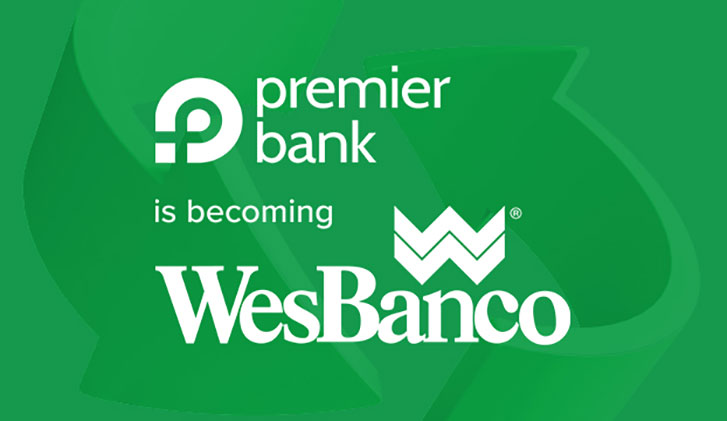NOTICE: Internet Explorer was retired by Microsoft on June 15th, 2022 and is no longer supported. This could change how you access Online Banking.
Due to weather, many banking centers have delayed openings. Please call ahead before visiting your branch.
Filling Out the FAFSA

Welcome to WesBanco Wellness: College Prep Edition. In an effort to help students set up a solid financial footing for the future, we will cover such topics as the FAFSA, the cost of college, setting up your first account and repaying student loans.
The Free Application for Federal Student Aid (FAFSA) is an application for financial aid made up of scholarships and grants that the government awards to students based on their needs.
Unfortunately, many students who would qualify for FAFSA funds don’t even complete the application. A 2018 analysis found that $2.6 billion in financial aid went unclaimed in the 2018–19 school year. That means more than 600,000 students were eligible but didn’t claim their fair share of FAFSA grants and scholarships.
The average amount awarded hovers around $3,900. Not bad for about a half-hour of work, right? Simply filling out the application is half the battle for most people. If you’re getting ready to fill out the FAFSA, follow these tips to make it quick, painless, and worth your time.
Get Your Documents Together
The FAFSA application requires you to prove your family’s financial situation, so make sure you have all of the documents you need before you start the application. That way, you won’t have to stop, start, and track down last year’s tax returns. Here’s what you should have on hand:
- Your social security number (and your parents’).
- A Federal Student Aid Identification Number (FSA ID). This is the number that you’ll use throughout the application process. You can get one here.
- Your driver’s license or another form of government-issued ID.
- If you’re younger than 24, your and your parents’ 2019 tax returns (read this to know why).
- Bank account statements and any other asset records.
- Records of untaxed income such as child support, disability benefits, and health savings accounts.
- The code for each school you want to apply to. You can find them here.
Fill Out the Application
Now you’re ready to start filling out the FAFSA application. The good news is that you only need to fill it out once, and then you can use your school codes to submit the application to the schools you want.
You have nothing to lose by applying.
Send your application to all the schools you’re considering. You can apply to up to 10 schools through the FAFSA website. It’s free and your future eligibility for financial aid is tied to your application. You can even send an application to a school that hasn’t accepted you yet. If you’re not accepted, they’ll just disregard your application, so it’s no big deal.
Fill out the FAFSA even if you don’t think you qualify. Your eligibility doesn’t just boil down to how much you make, but how much your parents make, how much you have in savings, and how much your family would be expected to contribute to your education. Even if your parents make six figures, you won’t be automatically disqualified from getting aid. Your FAFSA can also be the key to low-cost student loans. If you don’t qualify for a grant or a grant doesn’t cover the full cost you need, your school can use your FAFSA to help you find low-interest federal loan options to pay your way.
When filling out the FAFSA, don’t leave spaces blank. Blank spaces can lead to processing delays. Fill out as much as you can, and then use zeroes or choose “Not Applicable” to fill in fields that don’t apply to you.
Advice for filling out the FAFSA: Do it! Lots of grant money (that’s free money) goes unclaimed every year, and some of it could be yours. You have nothing to lose by applying.
Increase Your Eligibility
Once you send your application off to your chosen schools, they’ll use a formula to figure out whether you’re eligible and how much you’ll be awarded. Each school figures out how much tuition, books, room, and board will cost, which is called cost of attendance (COA). The school then uses your FAFSA to compare that COA against how much your family could be contributing to your COA, which is called the expected family contribution (EFC). A standard formula is applied to bridge the gap between EFC and COA, awarding you grants or scholarships to make college more affordable.
If you really want to increase your eligibility, here are some tips to make sure you’re getting the most aid possible.
- Lower the amount of money in your savings account. You’ve been saving for college since you were seven? Great job! Now, ask your parents to help you transfer that money into a 529 plan rather than keeping it in your savings. The FAFSA calculation assumes that 20 percent of a student’s assets should be used toward school, but for parents, it’s only up to 5.64 percent. By putting your college savings into a parent-controlled 529 plan, it’ll be assessed at the lower rate.
- Use what you have now. If you have a chunk of savings for college, plan to use it up on tuition and books during your freshman year. “Spending down” your savings to start is a smart way to use your college savings because it could mean a better chance at scholarships and grants after freshman year.
- Move money. Did your parents recently sell a house or have an investment windfall? Those capital gains are treated like income on the FAFSA, so it may be better if your parents sock those gains into a 401(k) or IRA, since those won’t count against you.
- Add supplementary levels. Does your financial situation look better on paper than in real life? If you’ve recently experienced a job loss, if your parents have lost a large asset, or if your circumstances have changed, attach a supplementary letter to your application. Colleges run the numbers, but many consider more than just the basic application when determining eligibility. You can always explain your situation better to increase your chances.
- Appeal. If you received a decision you don’t think is fair (no money or not enough money), you can negotiate! Contact your school’s financial aid office and ask for the steps to appeal. Be polite and grateful for what you received, but definitely try and clarify your financial position to negotiate for a better scholarship or more grants.
The FAFSA makes college more affordable for millions of students every year. Every school has grants and scholarships available to students—and all they have to do is ask. By taking your time and filling out the FAFSA before you start school, it could mean less in student loans and more in your bank account.
Content is for informational purposes only and is not intended to provide legal or financial advice. The views and opinions expressed do not necessarily represent the views and opinions of WesBanco.
While we hope you find this content useful, it is only intended to serve as a starting point. Your next step is to speak with a qualified, licensed professional who can provide advice tailored to your individual circumstances. Nothing in this article, nor in any associated resources, should be construed as financial or legal advice. Furthermore, while we have made good faith efforts to ensure that the information presented was correct as of the date the content was prepared, we are unable to guarantee that it remains accurate today.
Neither Banzai nor its sponsoring partners make any warranties or representations as to the accuracy, applicability, completeness, or suitability for any particular purpose of the information contained herein. Banzai and its sponsoring partners expressly disclaim any liability arising from the use or misuse of these materials and, by visiting this site, you agree to release Banzai and its sponsoring partners from any such liability. Do not rely upon the information provided in this content when making decisions regarding financial or legal matters without first consulting with a qualified, licensed professional.



